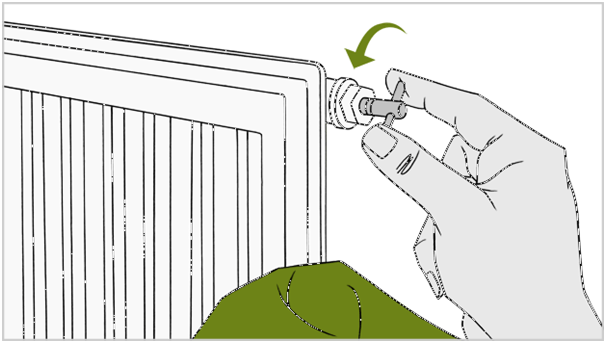
A radiator being cold is the most common problem found in a heating system and is easy to fix. It just means that there is air trapped in your radiator, which stops the hot water from circulating around the radiator effectively. In order to get that air out of the radiator you have to bleed the radiator (remove air).
Step 1
Turn off the pump, so you don’t end up pushing more air into the radiator system.
Step 2
At the top right or top left corner of the radiator you should find a square nut. This can only be turned using a radiator key, which you may have in the house, or which can be bought from a local DIY shop for around £2.
Step 3
Put a bucket on the ground under the end of the radiator you’re working on. Take the key and turn it about 45-90 degrees anti-clockwise, do not remove the centre nut, you will hear air hissing out followed by dirty water.
Step 4
Tightly close the valve, and check it later to ensure there is no leakage.
WHY IS MY RADIATOR COLD AT THE BOTTOM AND WARM AT THE TOP.
If the radiator is cold at the bottom and warm at the top and this problem persists, then there may be some sludge at the bottom of the radiator and it may need flushing out. For this, the radiator will need to be taken off the wall, flushed out with water and refitted. This can be done if you follow the correct instructions on how to isolate a radiator and have a basic understanding of how your heating system works. If several of your radiators have this problem and it is not solved by flushing the radiator out then the problem may be more serious. This could be caused by a fault with the circulating pump, blocked pipes or radiators or a badly designed system. You will need to call a professional out to look at this problem further as it may require the whole system to be flushed through or repairs to be carried out.
Finally
If after works are completed you find that your radiators are working correctly and are either not hot enough or are too hot then you can alter the temperature by either adjusting the controls on your boiler or for more modern radiators with their own temperature controls, simply turn up or down accordingly.

